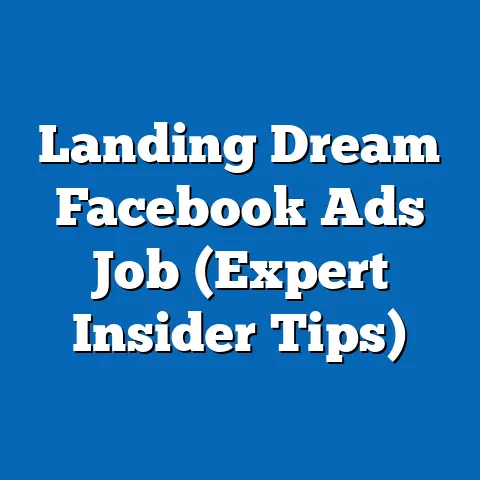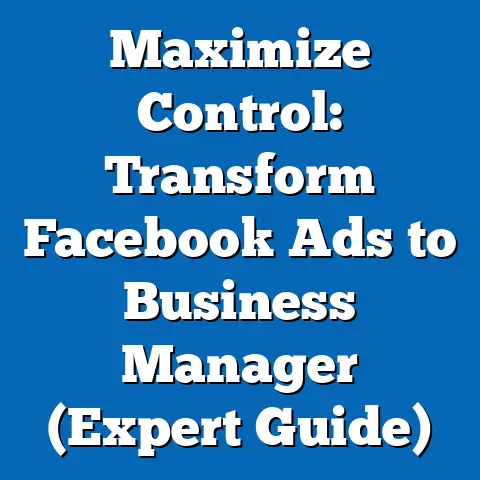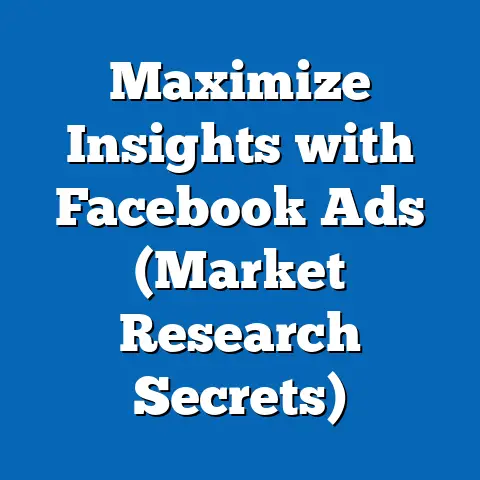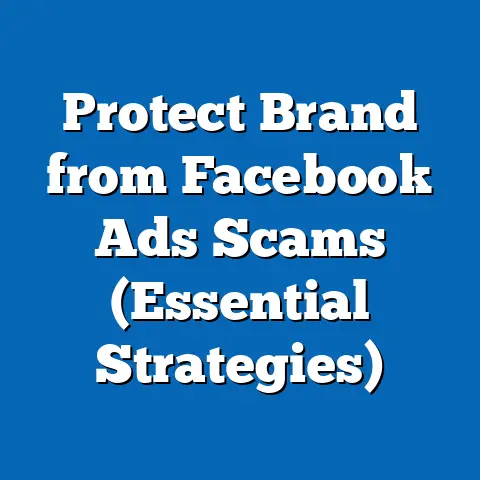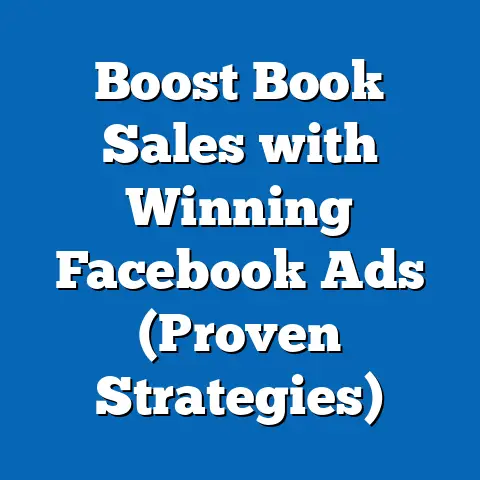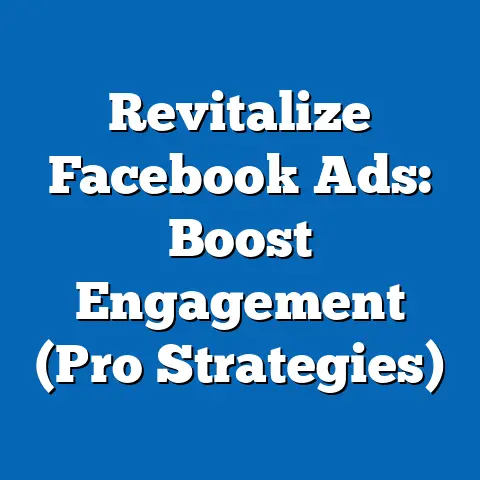Facebook vs. Twitter Ads (Unlock Unmatched ROI Secrets)
What if you could double your marketing ROI overnight just by shifting your advertising strategy from Facebook to Twitter? Or vice versa? It sounds like a dream, doesn’t it? I’ve spent years navigating the ever-changing landscape of social media advertising, and I can tell you, it’s not always a straightforward path to success. Imagine a world where your ad spend not only reaches your target audience but also converts them into loyal customers at an unprecedented rate. That’s the promise of strategic social media advertising. This article dives deep into the contrasting advertising landscapes of Facebook and Twitter, unveiling secrets that could unlock unmatched ROI for your business. Forget the generic advice; I’m pulling back the curtain on what actually works based on my own experiences and industry insights. Let’s get started!
The Landscape of Social Media Advertising
Overview of Social Media Advertising Trends
Social media has exploded from a simple way to connect with friends and family into a marketing powerhouse. I remember when businesses were hesitant to even create a Facebook page! Now, it’s almost unthinkable for a company not to have a presence on social media. It’s where your customers are, and increasingly, it’s where they discover new brands and products.
The rise of social media as a powerful marketing tool is undeniable. Statistics show that ad spending on platforms like Facebook and Twitter continues to climb year after year. According to Statista, global social media ad spending is projected to reach nearly $250 billion in 2024. That’s a lot of competition for attention! With this increased investment comes an even greater emphasis on achieving a high return on investment (ROI). Simply throwing money at ads and hoping for the best is no longer a viable strategy. Marketers need to be smarter, more targeted, and more data-driven than ever before. It’s not just about reach; it’s about results.
Profile of Facebook and Twitter Users
Understanding the demographics, user behavior, and engagement levels on both Facebook and Twitter is crucial for tailoring your ad campaigns. Think of it like this: you wouldn’t try to sell snowboards to people living in the desert, right? Similarly, you need to know who you’re talking to on each platform.
Facebook boasts a massive and diverse user base, with over 3 billion monthly active users worldwide. This vast audience includes a wide range of age groups, interests, and demographics. Facebook users tend to engage with content that’s more personal and community-oriented, making it ideal for building brand awareness and fostering customer relationships. I’ve seen businesses successfully use Facebook to create online communities around their products, driving engagement and loyalty.
Twitter, on the other hand, has a smaller but highly engaged audience of around 368 million monthly active users. Twitter users are often more interested in news, current events, and real-time conversations. The platform’s fast-paced nature makes it perfect for quick updates, announcements, and engaging in trending topics. I’ve noticed that brands that can inject themselves into relevant conversations on Twitter often see a significant boost in brand visibility.
These differences in demographics and user behavior significantly influence ad performance and effectiveness. What works on Facebook might fall flat on Twitter, and vice versa. It’s all about understanding the nuances of each platform and tailoring your messaging accordingly.
Key Takeaway: Know your audience! Before launching any ad campaign, take the time to research the demographics and user behavior on each platform. This will help you craft more effective messaging and targeting strategies.
Facebook Ads – The Giant of Social Media Marketing
Advertising Features and Formats
Facebook is a true advertising behemoth, offering a wide array of ad formats designed to cater to various marketing goals. I’ve personally experimented with almost all of them, and I can tell you, the options can be overwhelming! But that’s also what makes Facebook so powerful – the ability to tailor your ads to perfectly match your objectives.
Here are some of the most popular ad formats available on Facebook:
- Image Ads: Simple yet effective, image ads are perfect for showcasing your product or brand with a visually appealing image and concise copy.
- Video Ads: Video ads are highly engaging and can be used to tell a story, demonstrate a product, or share a testimonial. I’ve found that short, attention-grabbing videos tend to perform best.
- Carousel Ads: Carousel ads allow you to display multiple images or videos in a single ad unit, making them ideal for showcasing a range of products or highlighting different features of a single product.
- Collection Ads: Collection ads are designed for e-commerce businesses, allowing users to browse and purchase products directly from the ad.
- Lead Ads: Lead ads make it easy for users to submit their contact information without leaving the Facebook platform, making them great for generating leads for your business.
Each of these formats can be leveraged for different marketing goals. For example, image ads are great for building brand awareness, while lead ads are ideal for generating sales leads. The key is to choose the format that best aligns with your objectives and target audience.
Targeting Capabilities
One of the biggest advantages of Facebook advertising is its incredibly granular targeting capabilities. Facebook allows you to target users based on a wide range of factors, including demographics, interests, behaviors, and even their connections to other Facebook pages.
Here are some of the most powerful targeting options available on Facebook:
- Custom Audiences: Custom audiences allow you to target users who have already interacted with your business, such as website visitors, email subscribers, or customers. This is a fantastic way to retarget users who have shown interest in your products or services. I’ve seen significant ROI improvements by retargeting website visitors with specific product ads.
- Lookalike Audiences: Lookalike audiences allow you to target new users who share similar characteristics with your existing customers. This is a great way to expand your reach and find new customers who are likely to be interested in your products or services.
- Interest-Based Targeting: Facebook allows you to target users based on their interests, hobbies, and activities. This is a great way to reach users who are passionate about your niche.
- Behavioral Targeting: Facebook allows you to target users based on their online behavior, such as their purchase history, travel habits, or device usage. This can be incredibly powerful for reaching users who are likely to be in the market for your products or services.
These features can help advertisers reach their ideal customers with laser precision. The more specific you can get with your targeting, the more likely you are to see a positive ROI.
Case Studies and Success Stories
To illustrate the power of Facebook advertising, let’s take a look at a few real-life examples of successful campaigns:
- Dollar Shave Club: Dollar Shave Club famously used Facebook video ads to disrupt the shaving industry. Their humorous and relatable videos went viral, driving massive brand awareness and customer acquisition.
- Airbnb: Airbnb uses Facebook’s custom audience targeting to retarget website visitors who have shown interest in booking a stay. They show these users personalized ads based on their previous searches, driving conversions and increasing bookings.
- MVMT Watches: MVMT Watches used Facebook’s lookalike audience targeting to expand their reach and find new customers who are similar to their existing customer base. This strategy helped them grow their brand rapidly and achieve significant sales growth.
These are just a few examples of businesses that have achieved high ROI through effective Facebook advertising strategies. The key is to understand your target audience, create compelling ad content, and leverage Facebook’s powerful targeting capabilities.
Key Takeaway: Facebook’s vast reach and granular targeting options make it a powerful platform for advertisers. Experiment with different ad formats and targeting strategies to find what works best for your business.
Twitter Ads – The Underestimated Contender
While Facebook often steals the spotlight, Twitter offers a unique and often underestimated advertising platform. In my experience, Twitter can be incredibly effective for reaching specific niche audiences and engaging in real-time conversations.
Advertising Features and Formats
Twitter offers a variety of ad formats designed to help businesses achieve their marketing goals. Here are some of the most popular options:
- Promoted Tweets: Promoted tweets appear in users’ timelines just like regular tweets, but they are clearly marked as “Promoted.” This format is great for increasing brand awareness, driving website traffic, and generating engagement.
- Promoted Trends: Promoted trends allow you to place your brand’s hashtag or topic at the top of Twitter’s trending topics list. This is a great way to generate buzz and increase brand visibility. I’ve seen brands successfully use promoted trends to launch new products or promote events.
- Promoted Accounts: Promoted accounts help you increase your follower count by suggesting your account to users who are likely to be interested in your brand. This is a great way to build a loyal following and expand your reach.
The unique advantages of these formats lie in their ability to integrate seamlessly into the Twitter experience. Unlike some other platforms, Twitter ads don’t feel as intrusive, which can lead to higher engagement rates.
Targeting Options and Audience Insights
Twitter’s targeting capabilities are different from Facebook’s, but they can be just as effective. Twitter allows you to target users based on a variety of factors, including:
- Keyword Targeting: Keyword targeting allows you to target users who have recently tweeted about specific keywords or topics. This is a great way to reach users who are actively discussing your industry or product category.
- Interest Categories: Twitter allows you to target users based on their interests, such as sports, technology, or fashion.
- Follower Targeting: Follower targeting allows you to target users who follow specific accounts. This is a great way to reach users who are likely to be interested in your brand if they follow a competitor or an industry leader.
- Demographic Targeting: Twitter also offers basic demographic targeting options, such as age, gender, and location.
Comparing the targeting effectiveness of Twitter with Facebook, I’ve found that Twitter excels at reaching users who are actively engaged in specific conversations, while Facebook is better for targeting users based on their overall interests and demographics.
Case Studies and Success Stories
Let’s take a look at a few examples of successful Twitter advertising campaigns:
- Wendy’s: Wendy’s is known for its witty and engaging Twitter presence. They’ve successfully used promoted tweets to inject themselves into relevant conversations and build brand awareness.
- Old Spice: Old Spice famously used Twitter to create personalized videos for their followers, driving massive engagement and brand loyalty.
- Netflix: Netflix uses Twitter to promote their latest shows and movies, engaging with fans and driving traffic to their streaming platform.
These brands have effectively engaged audiences through Twitter ads by being authentic, funny, and relevant. The key is to understand the unique culture of Twitter and tailor your messaging accordingly.
Key Takeaway: Twitter’s real-time nature and unique targeting options make it a valuable platform for reaching niche audiences and engaging in relevant conversations.
Comparing ROI – Facebook vs. Twitter
Now for the million-dollar question: which platform offers a better ROI? The answer, of course, is “it depends.” It depends on your business, your target audience, and your marketing goals. But let’s dive into the data to get a clearer picture.
Cost-Effectiveness Analysis
A detailed comparison of average CPC (Cost Per Click), CPM (Cost Per Thousand Impressions), and CPA (Cost Per Acquisition) on both platforms can provide valuable insights into cost-effectiveness.
Generally, Facebook tends to have a lower CPC and CPM than Twitter, thanks to its larger audience and more mature advertising platform. However, Twitter can sometimes offer a lower CPA, especially for businesses that are targeting niche audiences or engaging in real-time marketing.
According to recent industry benchmarks, the average CPC on Facebook is around \$0.38, while the average CPM is around \$11.20. On Twitter, the average CPC is around \$0.45, while the average CPM is around \$6.50.
These metrics impact overall ROI for advertisers. If you’re looking to reach a large audience at a low cost, Facebook might be the better choice. But if you’re targeting a specific niche and willing to pay a bit more per click, Twitter could be more effective.
Conversion Rates and Customer Journey
The customer journey differs significantly on Facebook and Twitter. On Facebook, users are often in a more relaxed and social mindset, making it a great platform for building brand awareness and nurturing customer relationships. On Twitter, users are often looking for information and engaging in real-time conversations, making it a great platform for driving immediate action.
Analyzing how the customer journey differs on each platform is crucial for tailoring your marketing strategies. For example, on Facebook, you might focus on creating engaging content that builds brand loyalty, while on Twitter, you might focus on creating ads that drive immediate clicks and conversions.
Data on conversion rates shows that Facebook often has higher conversion rates than Twitter, thanks to its more mature advertising platform and more targeted audience. However, Twitter can sometimes drive higher-quality leads, especially for businesses that are targeting highly engaged users.
Audience Engagement Metrics
Comparing engagement rates on ads from both platforms can provide valuable insights into ad performance and ROI. Engagement metrics such as likes, comments, shares, and retweets can indicate how well your ads are resonating with your target audience.
Generally, Facebook tends to have higher engagement rates than Twitter, thanks to its more social and community-oriented nature. However, Twitter can sometimes drive more meaningful engagement, especially for businesses that are engaging in real-time conversations and building relationships with their followers.
The implications of these metrics for ad performance and ROI are clear: if you’re looking to drive high levels of engagement, Facebook might be the better choice. But if you’re looking to build meaningful relationships and drive high-quality leads, Twitter could be more effective.
Key Takeaway: There’s no one-size-fits-all answer to which platform offers a better ROI. It depends on your business, your target audience, and your marketing goals. Analyze the cost-effectiveness, conversion rates, and engagement metrics on both platforms to determine which one is the best fit for your needs.
Strategic Recommendations for Unlocking ROI
So, you’ve got the lay of the land. You understand the strengths and weaknesses of both Facebook and Twitter. Now, how do you actually unlock that unmatched ROI we talked about at the beginning? Here are my strategic recommendations, based on years of experience in the trenches.
Crafting Effective Ad Campaigns
Creating compelling ad content tailored to each platform’s unique audience is crucial for maximizing ROI. What works on Facebook won’t necessarily work on Twitter, and vice versa.
Here are some tips for crafting effective ad campaigns on each platform:
- Facebook: Focus on creating visually appealing ads that tell a story and resonate with your target audience. Use high-quality images and videos, and write compelling copy that highlights the benefits of your products or services.
- Twitter: Focus on creating concise and engaging tweets that capture the attention of your target audience. Use relevant hashtags, and inject yourself into trending conversations.
A/B testing and continuous optimization are essential for improving ad performance and maximizing ROI. Don’t be afraid to experiment with different ad formats, targeting options, and messaging to see what works best for your business. I can’t stress this enough: always be testing!
Integrated Marketing Strategies
Businesses can combine the strengths of both Facebook and Twitter to maximize ROI. By integrating your marketing efforts across both platforms, you can create a more cohesive and effective marketing strategy.
Here are some ways to integrate your marketing strategies across Facebook and Twitter:
- Cross-Platform Campaigns: Run campaigns that span both Facebook and Twitter, using each platform to complement the other. For example, you could use Facebook to build brand awareness and then use Twitter to drive immediate action.
- Retargeting Strategies: Retarget users who have interacted with your business on one platform with ads on the other platform. For example, you could retarget website visitors who came from Facebook with ads on Twitter.
The potential for cross-platform campaigns and retargeting strategies is immense. By leveraging the strengths of both platforms, you can create a more comprehensive and effective marketing strategy.
Analyzing Data and Metrics for Continuous Improvement
Data analysis is crucial for refining advertising strategies and maximizing ROI. By tracking and analyzing your ad performance metrics, you can identify what’s working and what’s not, and make adjustments accordingly.
Here are some tools and techniques for measuring ad performance across both platforms:
- Facebook Ads Manager: Facebook Ads Manager provides detailed insights into your ad performance, including reach, impressions, clicks, conversions, and cost per acquisition.
- Twitter Analytics: Twitter Analytics provides insights into your tweet performance, including impressions, engagement, and follower growth.
- Google Analytics: Google Analytics allows you to track the traffic and conversions that are driven by your Facebook and Twitter ads.
Emphasizing the importance of data analysis in refining advertising strategies is key. The more data you have, the better equipped you are to make informed decisions and optimize your campaigns for maximum ROI.
Key Takeaway: Craft compelling ad content tailored to each platform, integrate your marketing strategies across both platforms, and continuously analyze your data to refine your advertising strategies.
Conclusion: The Future of Social Media Advertising
We’ve covered a lot of ground, from understanding the unique landscapes of Facebook and Twitter to crafting effective ad campaigns and analyzing data for continuous improvement. The key takeaway is that there’s no magic bullet when it comes to social media advertising. It’s all about understanding your audience, experimenting with different strategies, and continuously optimizing your campaigns for maximum ROI.
The potential for unmatched ROI by strategically leveraging the strengths of both Facebook and Twitter is real. By combining the reach and targeting capabilities of Facebook with the real-time engagement of Twitter, you can create a powerful marketing strategy that drives results.
The future of social media advertising is constantly evolving. New platforms are emerging, new technologies are being developed, and consumer behavior is changing rapidly. To stay ahead of the curve, you need to be adaptable, innovative, and always willing to experiment.
As I see it, the most successful advertisers will be those who embrace data-driven decision-making, prioritize customer experience, and are willing to adapt to the ever-changing landscape of social media.
Call to Action
Now it’s your turn! I encourage you to explore your advertising strategies on both Facebook and Twitter, experiment with different formats and targeting options, and most importantly, to analyze your results continuously to unlock the true potential of your ad spend. Don’t be afraid to fail, learn from your mistakes, and keep pushing the boundaries of what’s possible. The world of social media advertising is waiting to be conquered!

